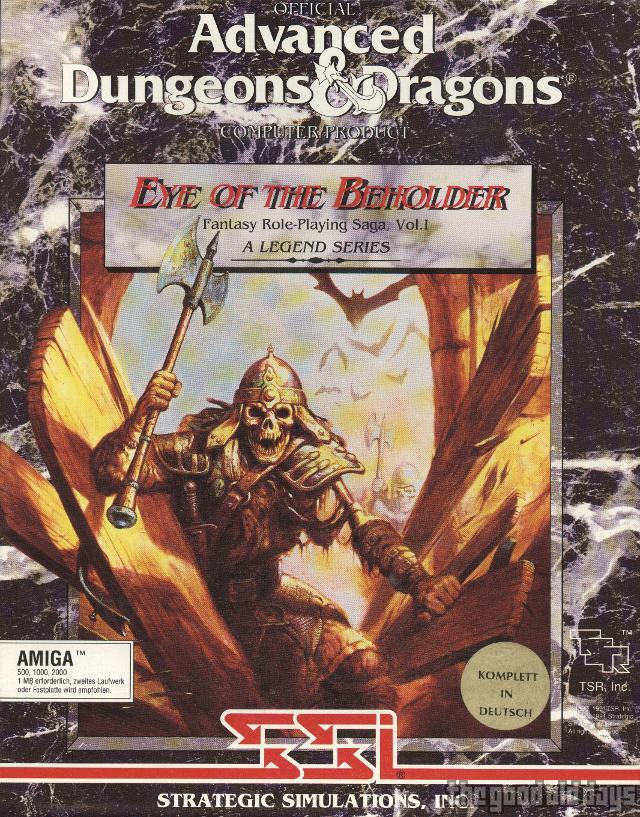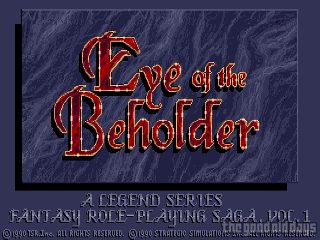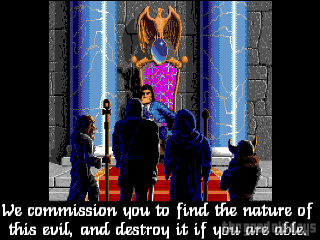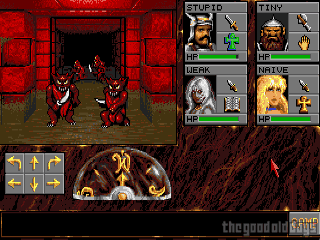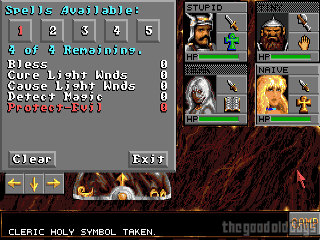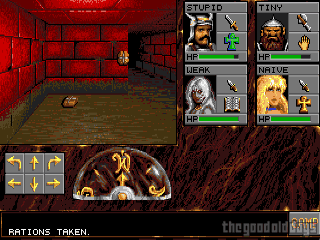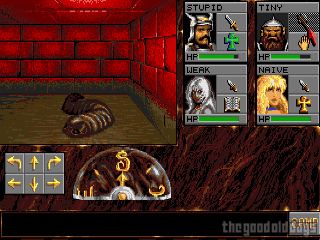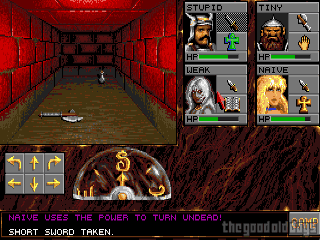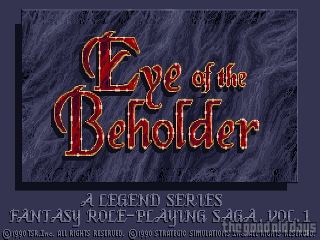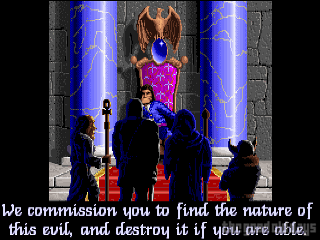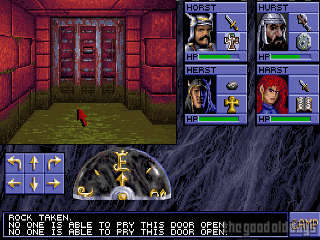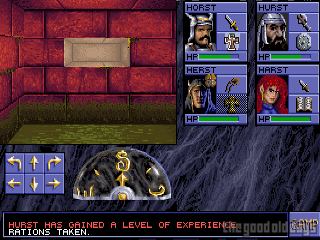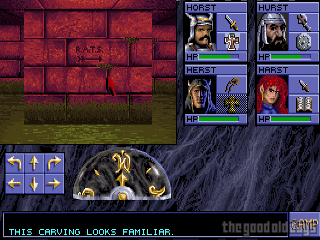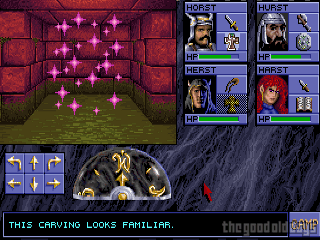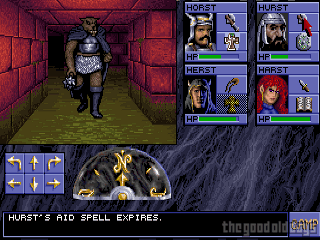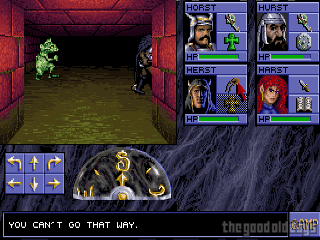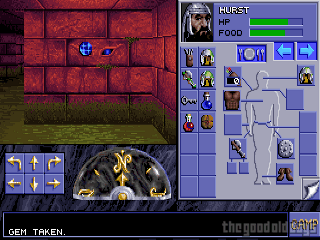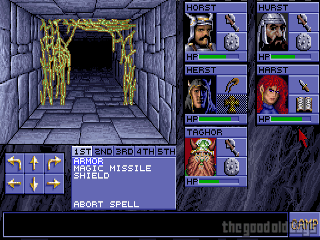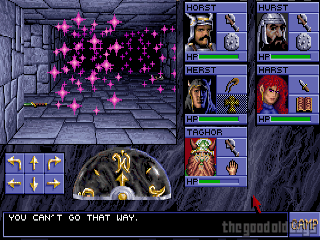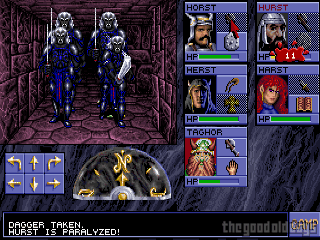Thoughts by Mr Creosote (27 00 2022) – Amiga (OCS)
The irony of calling your company Faster Than Light (FTL) when in fact, all your products were notoriously late is obvious. It cannot be denied that their Dungeon Master was a true work of art. The main thing not even being the large 3D window into the game world or everything taking place in real time, but rather the flawless design of managing every imaginable player interaction in this same view, following a highly intuitive interface. No separate character creation, no separate battle screen etc. Everything just fit together.
Though then, FTL left themselves wide open commercially when they not only failed to properly follow up on their huge success, but even failed to see the emergence of a new major force on the computer games market: the IBM PC. In 1991, a whole four years after Dungeon Master’s original release, they still didn’t have their game out on the new market leading platform. Which left ample opportunity for the competition to take over.
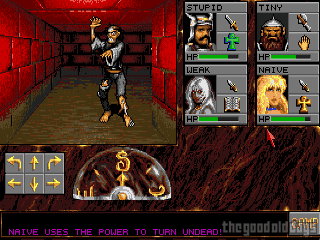
Cynically speaking, it could be suspected that SSI’s communication to developer Westwood must have been: make us a game exactly like that one, and make it look really, really great. Westwood, the talented craftsmen they were, delivered exactly that. A really good looking Dungeon Master clone.
There is no attempt to tell any story, to develop characters. Evil just happens to be lurking below the city of Waterdeep, so a group of heroes dives into the sewers under which more dungeon levels wait than expected by the city elders. Until they eventually meet a boss monster, which just happens to be there on the last level. Killing which ended the game in the least spectacular way imaginable in the original version. A good sign of the game having been rushed out. The Amiga port at least added a proper ending sequence.
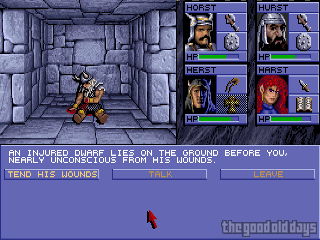
Player skills gained from playing Dungeon Master remain fully usable, especially when it comes to the real-time combat. The enemies are defined to a level where they quickly become unbeatable when just engaging in direct combat. Hitting, then moving away to evade, is a necessity, and the balancing is just right. On top, many monsters sport special abilities. Slaying a giant spider works well enough, but doing so before getting poisoned is another question. Unfortunately, this part just being a game of luck.
Fighting aside, the main challenge lies in decyphering the mazes. No automap available for help, the levels are chock full of fake walls, invisible teleporters, spinners… all those dungeon features which you either love or hate. The only explicit help being the compass rose at the bottom of the screen to indicate something unforeseen has just happened. On top, features like regular (visible) teleporters, lifts and small puzzles to open doors in different ways spice things up. It takes a very dedicated player to not get lost.
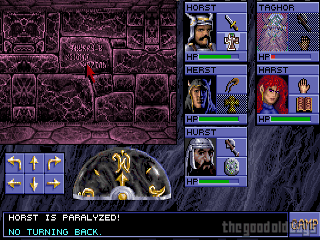
From today’s point of view, the graphics could use some additional animation frames. That aside, the game still looks quite good. The pixel sprites have aged well and the dungeon backgrounds change every three levels as well. A fan-made reverse engineered version re-imports the original VGA graphics to the Amiga and even adds automapping. For sure, a much more convenient way of playing these days.
Nevertheless, it is not so clear who would want to play through the game today anyway. Based on what came after, the name Eye of the Beholder now carries a huge legacy which at least this first game cannot really deliver on. It is an alright game, but apart from looking good, there is really nothing special about it. It was there in the right place at the right time which ensured its commercial success.
The case of it being the better Dungeon Master in terms of gameplay can be made, especially as far as balancing is concerned. Though in terms of pure design, it actually did a couple of things in much more clunky ways (such as taking the player out of the game world for character generation, spell memorization, camping…). One way or another, Dungeon Master is an important game in history. Eye of the Beholder is not. It is a (good) “me too” imitation which brought nothing new to the table.
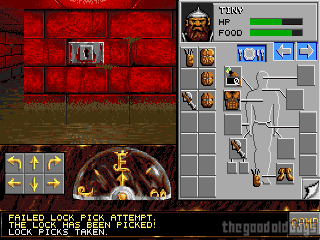 Instead, the main point is finding one’s way through the underground maze which includes avoiding traps and opening doors a lot. The corridors look pretty much alike everywhere, there are secret passages all over and there is no automapping – not an ideal combination. A printed map of the first three levels comes with the game, but since such a map doesn’t indicate your party’s current position, this isn’t an appropriate replacement. Also, the numerous teleporters aren’t marked on that map anyway. So there is really no alternative to picking up a pen and a piece of paper to map everything yourself.
Instead, the main point is finding one’s way through the underground maze which includes avoiding traps and opening doors a lot. The corridors look pretty much alike everywhere, there are secret passages all over and there is no automapping – not an ideal combination. A printed map of the first three levels comes with the game, but since such a map doesn’t indicate your party’s current position, this isn’t an appropriate replacement. Also, the numerous teleporters aren’t marked on that map anyway. So there is really no alternative to picking up a pen and a piece of paper to map everything yourself.